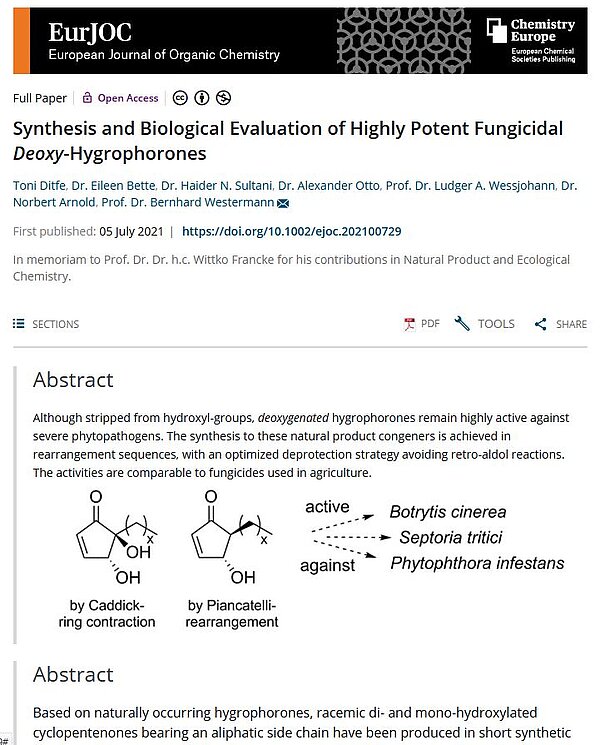Beating fungi with bioactives from fungi.
IPB natural product chemists recently produced various derivatives of deoxygenated hygrophorones from the natural fungicide hygrophorone. The final products showed equal or better fungicidal activities against the plant pathogens Botrytis cinerea, Septorii tritici, and Phytophthora infestans than the natural product itself or comparable commercial fungicides. All three pathogens cause major economic damage to the agricultural sector. While B. cinerea, the causal agent of gray mold rot, attacks many different plant species, including grapes and strawberries, S. tritici specializes on a few monocotyledonous species such as wheat or barley. Here, the fungus causes necrosis on the leaves, the so-called leaf drought. P. infestans, the causal agent of late blight disease of potatoes and tomatoes, also regularly leads to serious crop failures.
Hygrophorones were once isolated by IPB scientists around Norbert Arnold from native fungal species of the genus Hygrophorus. At that time, the chemist noticed that Hygrophorus species are less decomposed by microorganisms in late autumn than other fungi. An analysis of the constituents brought to light the oxygen-containing cyclopentenes with various alkyl chains, which were named as the new natural substance class of Hygrophorones by the Halle scientists. Many representatives of the hygrophorones showed strong antibacterial or fungicidal activities and proved to be extremely effective against the ooomycete Phytophthora infestans. The new generation of deoxygenated hygrophorones broadens the spectrum of available agents against dangerous plant diseases.



